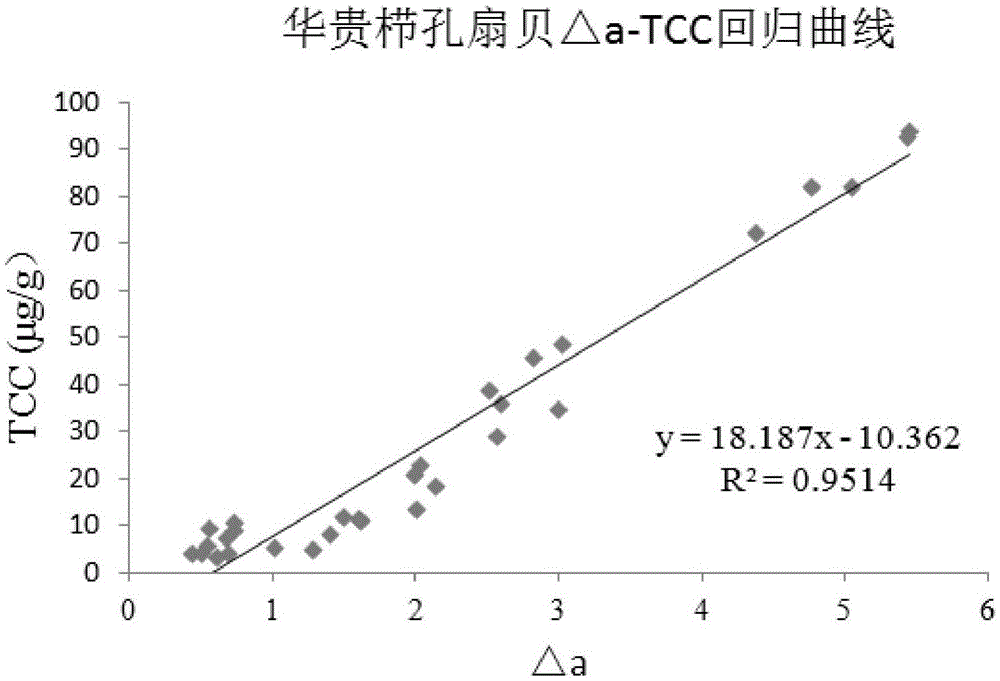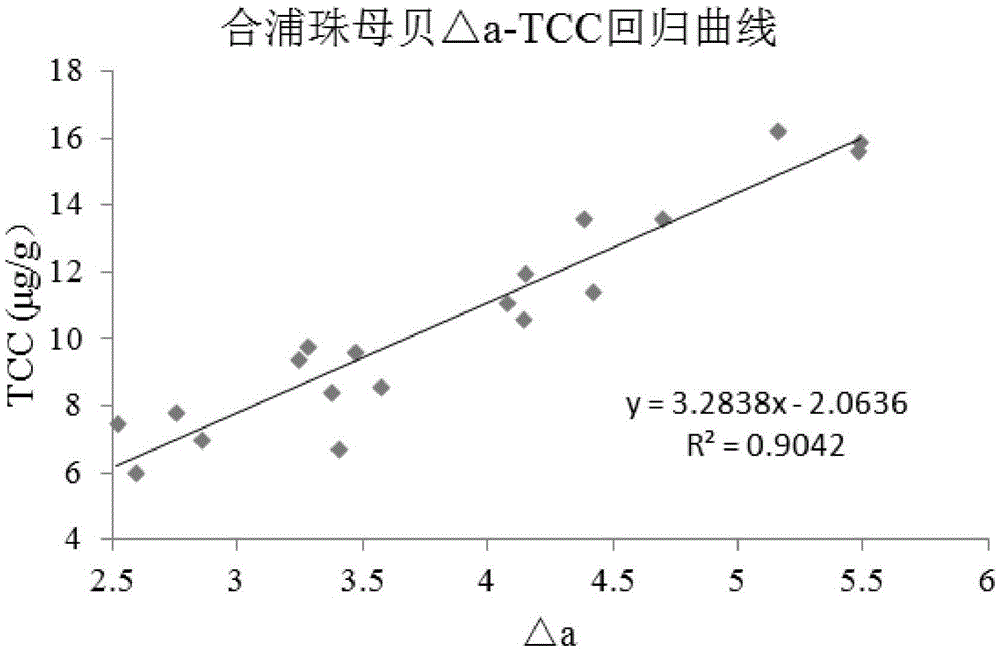Quick detection method of carotenoid content in marine bivalve organism
A technology of carotene and bivalves, which is applied in the field of carotenoid content detection, can solve the problems of weighing, extraction and detection, which are time-consuming, volatile, and work-intensive, and achieve shortened detection time and process, accurate batch Measuring and improving the effect of utilization
- Summary
- Abstract
- Description
- Claims
- Application Information
AI Technical Summary
Problems solved by technology
Method used
Image
Examples
Embodiment 1
[0037] The method for rapidly detecting the content of carotenoids in marine bivalve organisms provided by this embodiment comprises the following steps:
[0038](1) Animals to be tested and sampling: 30 Chlamysnobilis Reeve to be tested came from Hainan Sanya Yiyuan Aquaculture Co., Ltd. The adductor muscle of the living body was sampled, and the closed shell was obtained after being processed with a slicer knife. Transverse tissue section of the shell muscle, the thickness is about 3mm.
[0039] (2) Tissue section color difference detection: put the tissue section in a sample groove about 2mm deep (the thickness of the tissue section is determined according to the depth of the groove, because the slice is soft, so it is required to be slightly thicker than the depth of the groove. In fact, it is only a requirement The depth of the groove is slightly smaller than the thickness of the tissue section to ensure that the thickness of the tissue section after pressing is equal to ...
Embodiment 2
[0051] The method for rapidly detecting the content of carotenoids in marine bivalve organisms provided by this embodiment comprises the following steps:
[0052] (1) Animals to be tested and sampling: the marine bivalve mollusc of Pinctadafucata to be tested comes from the cultured species in Lingshui, Hainan. The adductor muscle of the living body was sampled, and the transverse tissue section of the adductor muscle was obtained after being processed with a slicer knife, with a thickness of about 3mm;
[0053] (2) Chromatic aberration detection of tissue sections: place the tissue sections in a sample chamber with a depth of about 2mm (same as Example 1), and cover the sample with a cover glass with light-shielding treatment on the edge; press the cover glass tightly to ensure the thickness of the sample The depth is the same as that of the sample groove to ensure that the sample detection surface is smooth and the detection thickness is consistent to reduce errors; the dete...
PUM
| Property | Measurement | Unit |
|---|---|---|
| thickness | aaaaa | aaaaa |
Abstract
Description
Claims
Application Information
 Login to View More
Login to View More - R&D
- Intellectual Property
- Life Sciences
- Materials
- Tech Scout
- Unparalleled Data Quality
- Higher Quality Content
- 60% Fewer Hallucinations
Browse by: Latest US Patents, China's latest patents, Technical Efficacy Thesaurus, Application Domain, Technology Topic, Popular Technical Reports.
© 2025 PatSnap. All rights reserved.Legal|Privacy policy|Modern Slavery Act Transparency Statement|Sitemap|About US| Contact US: help@patsnap.com


